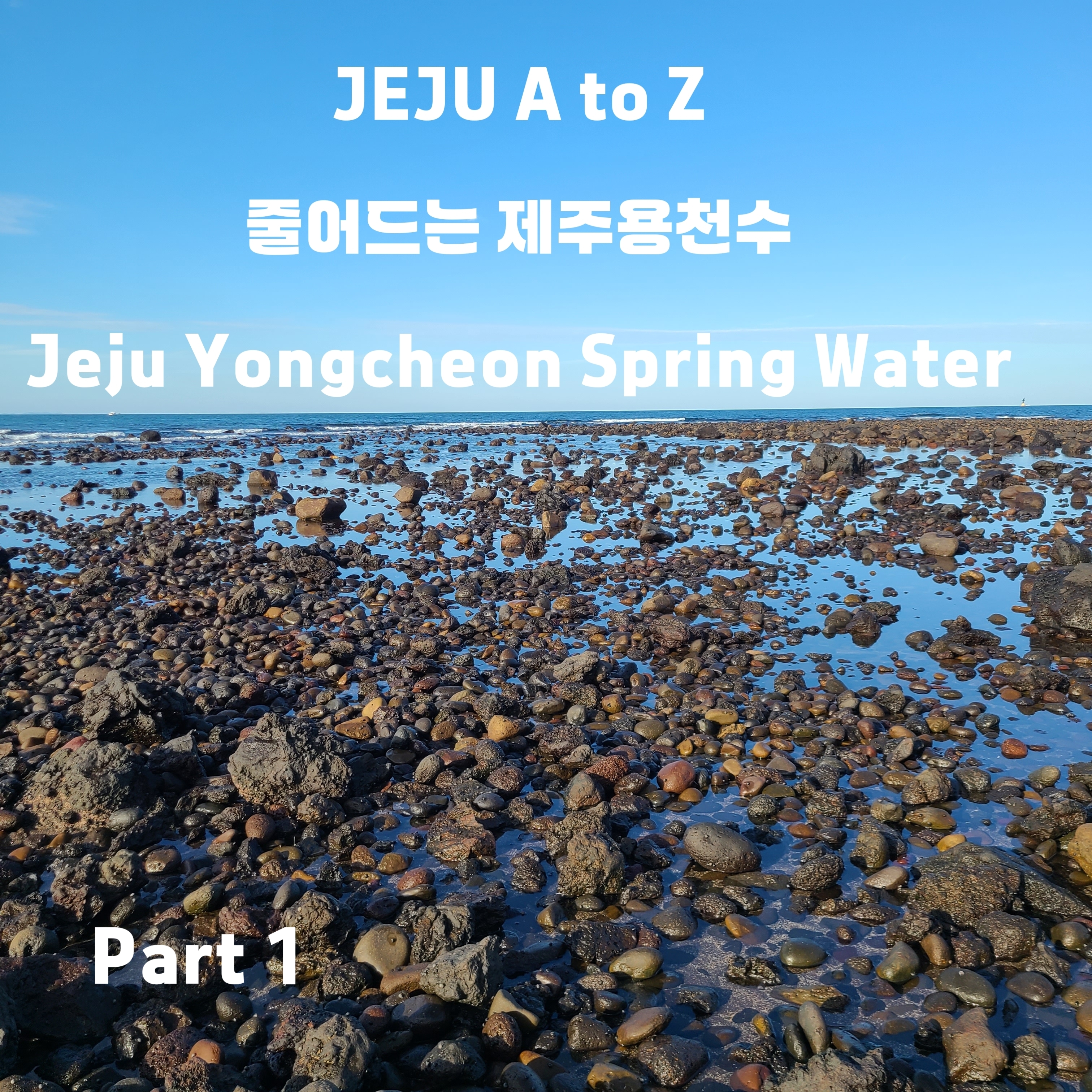JEJU A to Z:
사라지는 용천수
Jeju Lava Spring Water
Part 1

Z: 제주는 화산섬이다. 예로부터 먹는 물이 귀했다.
하지만 살아 샘솟는 물로 불리는 제주의 생명수, 용천수가 있다.
Jeju is a volcanic island.
Drinking water has been NOT enough naturally and traditionally.
However, there is Yongcheon Water (Spring water), the life water of Jeju, which is called the water that springs alive.
A: 용천수는 제주의 젖줄이다. 제주도 전역에 마을마다 용천수가 있어서 생활에 활용해 왔다.
Yongcheon water is the lifeline of Jeju.
Every village in Jeju Island has Yongcheon water, so people used it for their daily life.
Z: 하지만 용천수가 점점 사라지고 있다.
따라서 용천수를 체계적으로 보전하고 관리하며 효율적으로 활용하기 위한 대책 마련이 시급한 상황이다.
But Yongcheon water is gradually disappearing.
Therefore, it is urgent to prepare measures to systematically preserve, manage, and efficiently utilize Yongcheon water.
A: 제주는 화산섬이라 빗물이 지하로 스며든다.
Jeju is a volcanic island, so rainwater seeps underground.
Z: 이 빗물은 대수층(지하수를 함유한 지층)을 따라 흐르다가 틈이 지표로 노출된 지역이나 용암류 끝부분인 해안가 등에서 지표면으로 솟아난다.
This rainwater flows along the aquifer (strata, Land Layers which containing groundwater) and rises to the surface from areas where the gap is exposed to the surface or from coastal areas at the end of lava flows. That is Yongcheon Spring Water.
A: 그게 용천수인 것이죠. 현재 용천수는 몇 개이죠? How many Yongcheonsu do you have now?
Z: 제주도내에는 646개소의 용천수가 있다. 이중에는 162개소만 활용되고 있다. 25% 수준이다.
There are 646 water springs in Jeju Island. Of these, only 162 are being used. It is around 25%.
A: 제주도청이 용천수를 체계적으로 관리하기 위해 조사하기 시작한 건 1999년부터이다.
The Jeju Provincial Government began investigating Yongcheon water systematically in 1999.
Z: 처음 조사를 시작한 이후보다 265곳이나 감소한 수치이다.
1999년 당시에는 용천수 3곳 중 2곳이 활용되고 있었다.
하지만 20여년이 지난 지금은 1/4 수준만 활용되고 있다.
The figure is down 265 places since the first survey began.
At the time of 1999, two out of three Yongcheonsu were being used.
However, more than 20 years later, only a quarter of the level is being used.